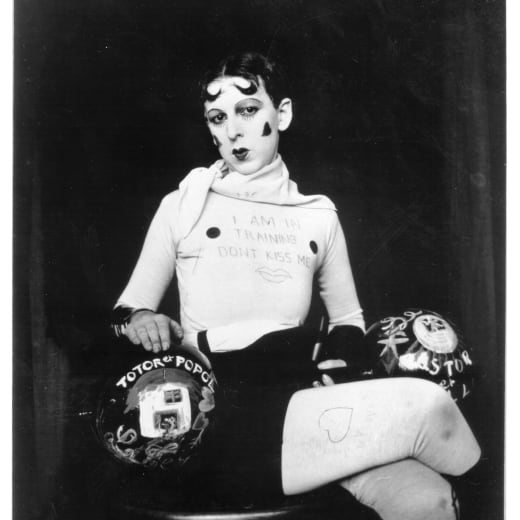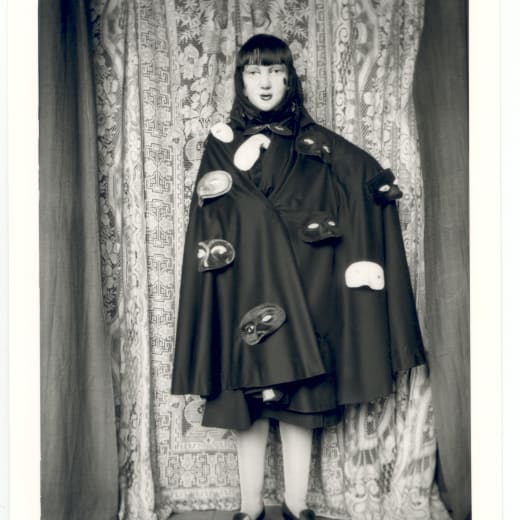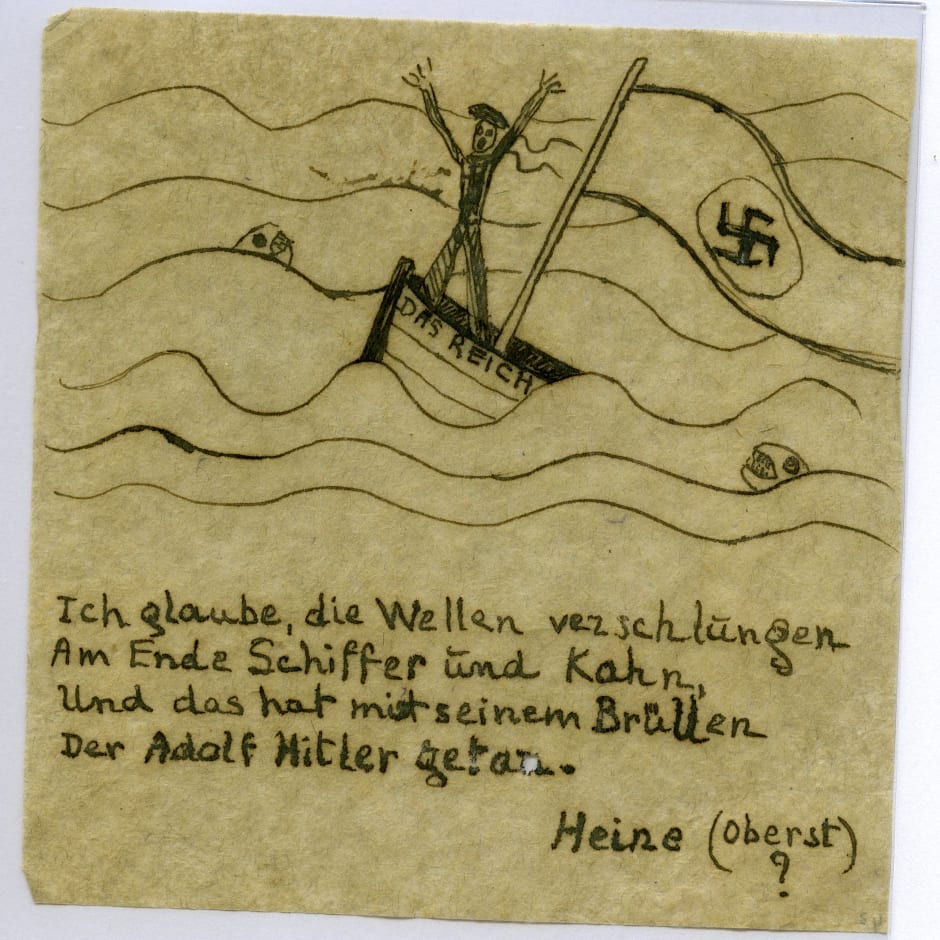
Claude Cahun (1894-1954) was an artist, photographer and writer. They are best known today for their surreal self-portrait photographs which show them dressed as different characters. Cahun questioned the accepted status-quo, particularly the position of women, through their art and in the way they lived their life
Cahun’s connection with Jersey began early, with childhood holidays spent in Jersey and Brittany. Born Lucy Schwob in Nantes, France to a wealthy Jewish family, by their early twenties Cahun was looking for a new, gender-neutral name. They fixed on the name Claude Cahun in 1918. At that time they were in a same-sex relationship with Suzanne Malherbe, who used the pseudonym Marcel Moore. The two had become step siblings in their mid-teens and at some point a closer relationship developed.
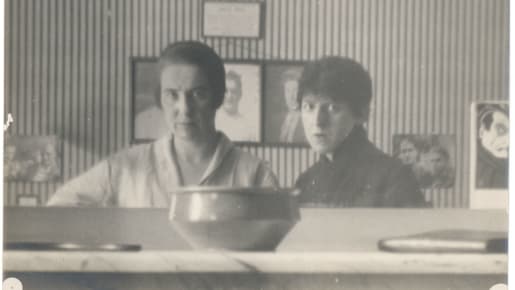
Self Portrait with Marcel Moore
Cahun and Moore were both artists and collaborated on work. Their first joint publication was a re-issue of Cahun’s book Vues et Visions in 1919, with new illustrations by Moore. It publicly outed them as a couple and is the first recorded use of Cahun’s new name. Shortly after its publication, Cahun and Moore moved to Paris, at the time a creative hub and perhaps a more forgiving place, socially and artistically, for the couple to live. But by 1937 they were ready to leave. Cahun was Jewish on their father’s side and felt a ‘premonition of danger’ about the political situation. And they were feeling the pull of the countryside, too. Cahun and Moore returned to Jersey, adopting their old names and letting people assume they were sisters.
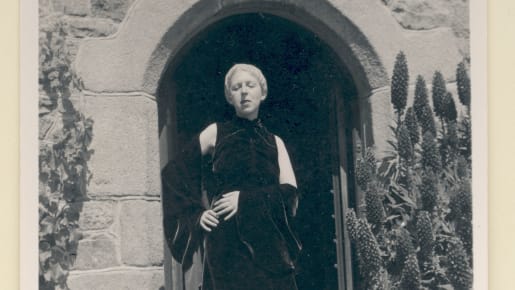
Self portrait (in velvet dress, at La Rocquaise) 1939
They initially stayed at St Brelade’s Bay Hotel where Cahun’s family had holidayed. But the couple soon bought La Rocquaise, a house overlooking the bay. They became village eccentrics; walking their cat, Kid, on a lead, wearing trousers and making art in and around the house. Initially they found life in Jersey to be a ‘holiday without end’. But with the prospect of a Nazi invasion of Jersey looking very likely in 1940, they refused to evacuate back to England. Instead, they decided to mount an underground resistance campaign following the German occupation of the Island in June 1940. Their campaign involved propaganda in the form of fake news sheets – authored by listening to the BBC on an illegal radio and then translated into German by Moore. These were left in places German soldiers might find them. Find out more about this campaign here.
Their two-person campaign against the regime lasted a risky four years and provoked the German authorities who spent years looking for the perpetrators. Finally, in the summer of 1944, the Gestapo entered La Rocquaise to investigate the ‘sisters’. Cahun and Moore ended up in prison in St Helier and narrowly avoided a sentence of death. They remained in jail until 9 May 1945, when Jersey was liberated. The couple stayed on in Jersey until 1953, but Cahun’s increasing ill health, as well as their bitterness against the locals who had (as they saw it) collaborated with the Nazis, saw them briefly returning to Paris to see if they might live there again. But they returned to Jersey and in late 1954 Cahun was taken into hospital and died on 8 December, aged 60. Moore lived on in Jersey until 1972, when she ended her own life.
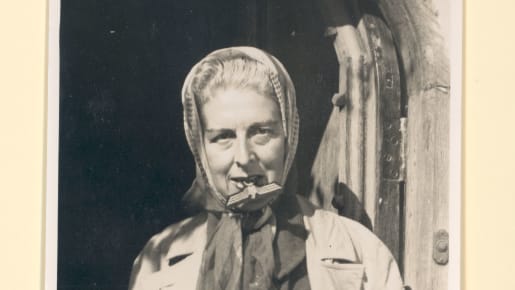
Self portrait (with Nazi badge between the teeth) 1945
Cahun and Moore are both buried in St Brelade’s Church in Jersey, which is next door to their old house. The church is a place Cahun photographed and it is where they walked their beloved cats.
After their death, Cahun’s artwork remained in relative obscurity. An exhibition “Surrealist Sisters – an extraordinary story of art and politics” was held in 1993 at Jersey Museum, showcasing John Wakeham’s collection of photographs, drawings, manuscripts and other material by Cahun and Moore. Wakeham had bought tea chests of Surrealist books and ‘stuff’ from a sale after Moore’s death in 1972. The exhibition led to his collection being acquired by Jersey Heritage in 1995. This was followed by a later purchase of another, smaller collection in 2000.
Jersey is now home to the world’s largest collection of Cahun’s work and Jersey Heritage has loaned works to museums and galleries all over the world.
View Claude Cahun’s work a permanent exhibition at Jersey Museum.
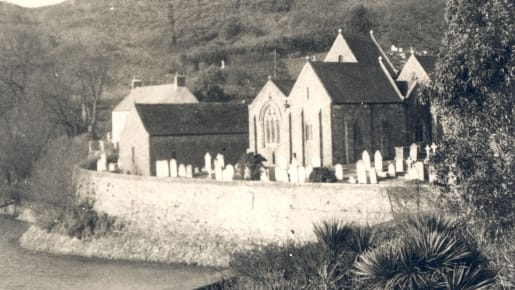
St Brelade's Church from La Rocquaise

La Tèrr’rie d’Jèrri
Jersey is a special Island. It is tiny – a small dot on the world map. But its size belies the breadth of its unique and varied heritage.
Find out more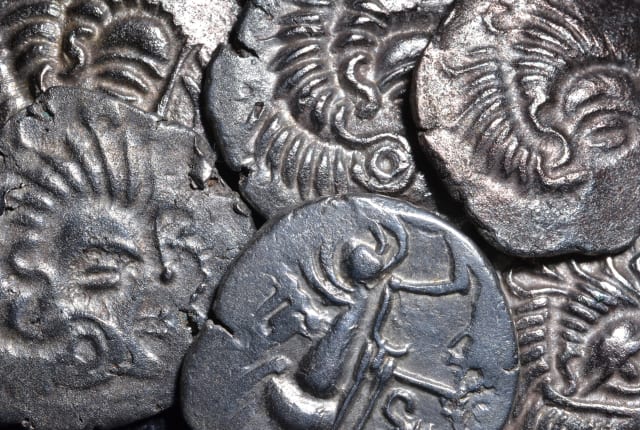
The Coin Hoard comes home
The story of Le Câtillon II, the largest hoard of Iron Age gold and silver coins, jewellery and ingots ever found in Western Europe.
Find out more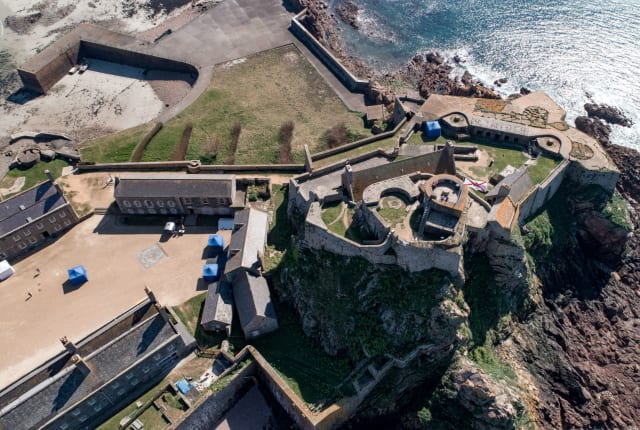
Castles of Jersey
Why has Jersey been one of the most heavily fortified parts of the British Isles?
Find out more









